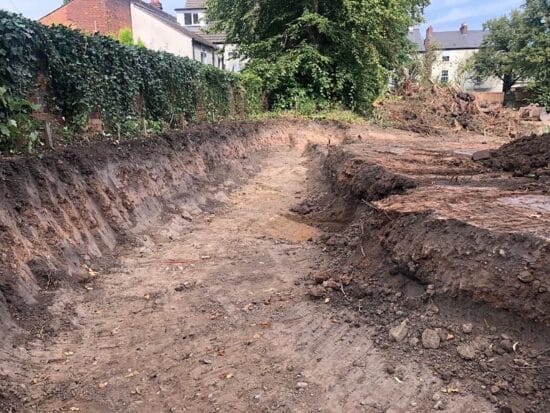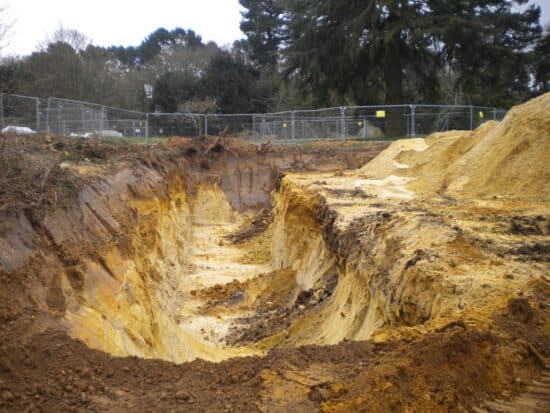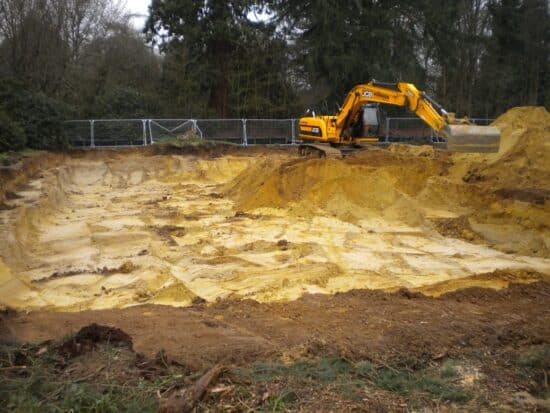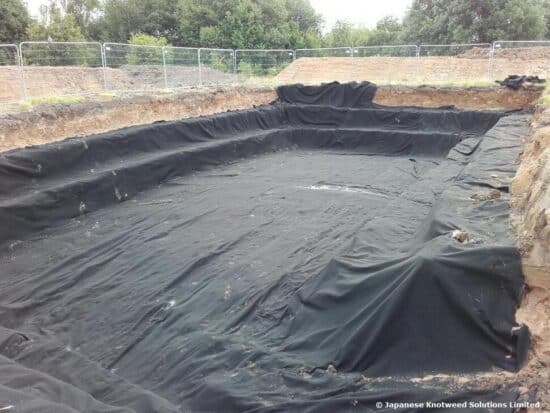
Our range of Japanese knotweed commercial services are designed to offer identification, treatment, removal and ongoing control of this invasive and damaging weed. Here at JKSL, we’ve spent many years ensuring that we set the highest standards for removal and can offer a 100% success guarantee, this includes a 10 year in-house guarantee as well as an insurance backed guarantee. We’re experienced in working in a range of commercial property settings to provide swift and reliable removal.
BACKGROUND
Japanese knotweed is a very robust plant that has grown for centuries on the slopes of volcanoes in Japan. Since it grew in very acidic soil that was low in nutrients, the plant gradually evolved over time to develop deep-reaching roots that could survive the acidic upper layers of the soil. Today, these roots can go as far as 3m deep in to the ground and the plant is capable of growing up to up to 2.4m in height
Having been brought into the UK by botanists in the 1850s, Japanese knotweed was soon adopted in many gardens as an ornamental plant. It had a fantastic appeal for those growing it: with its rapid growth, of up to 10 cm per day during the peak season, it was happily welcomed since the results of planting it were visible in a very short period of time.
However, as its popularity started slowing down, it was discarded into the wild, and over the years it has become an issue. Its roots are incredibly difficult to remove and the plant itself can cause structural damage to properties by invading even the smallest crevices in pipework and foundations.
NATIONAL IMPACT
Here at JKSL, we have access to the best available technologies, and we’ve made it our mission to combat this nemesis. The invasion of Japanese knotweed is one of the most menacing weeds that Britain has ever faced. The government estimated it would cost around £2.5 billion to completely wipe it out from the country. This number alone is an indicator of just how problematic the plant is.
We have been working in the field of identifying and removing the weed for 20 years, and in this time, we have learned and achieved a lot. With a skilled team of experts here at JKSL, our professional staff will help you in the identification of the plant and in choosing the best way of removing it, based on the spread of the weed and the nature of your site. We offer up to 10-year, insurance-backed guarantees to make sure that the Japanese knotweed does not make a return.
REMOVAL SERVICES
The are various methods in the removal and treatment of the Japanese knotweed. These include chemical control and monitoring, excavation and removal to licenced landfill, excavation and burial on-site, screening of soils, excavation and re-location (Waste Management Area) on-site and MeshTech.
Here’s a brief overview of what each of our commercial services entail:
Chemical treatment and monitoring implies using heavy-duty, industrial grade chemicals in combating the plant. In doing so, we strictly follow all the rules, regulations and laws brought by the Environment Agency and SEPA. The entire procedure is carried out by qualified practitioners.
Excavation and removal from site to a licensed landfill facility offers the fastest results. This is the best option if time is of the essence. This method involves removing the Japanese knotweed, including the rhizome network from the area of infestation, allowing for immediate development of the site.
Excavation and on-site burial of the Japanese knotweed is an alternative to taking the material off-site to licensed landfil. This option can be used when there is enough space to retain the Japanese knotweed materials on site.
Excavation and re-location (to a Waste Management Area) is when the Japanese knotweed materials are excavated and relocated to an on-site waste management area to continue chemical treatment, this allows for development within the original area.
Soil Screening is when the Japanese knotweed and rhizomes are seperated out from the other soils, in order to reduce the amount of controlled material to go off site.
MeshTech is a specially developed ‘green’ treatment solution. The method does not use chemicals, is more friendly to the environment and also helps in the treatment of soil erosion.
If you have any questions about the identification or removal of Japanese knotweed on your premises then don’t hesitate to get in touch. Our friendly and knowledgeable can talk you through the most suitable commercial service for your site.
THE COST OF COMMERCIAL KNOTWEED REMOVAL
The cost of commercial Knotweed removal can vary greatly depending on the size and location of the infestation. In general, chemical treatment is the least expensive method, while excavation is the most expensive. The cost of meshtech and incineration will also vary depending on the size of the infestation.
The cost of commercial Knotweed removal should also factor in the cost of professional surveying and monitoring. It is important to have a professional survey the infestation to determine the extent of the problem. Professional monitoring is also important to ensure that the Knotweed has been completely removed and does not regrow.
THE IMPORTANCE OF PROFESSIONAL KNOTWEED REMOVAL
It is important to hire a professional knotweed removal company to remove Japanese knotweed from your property. Professional Knotweed removal companies have the experience and expertise to remove the plant safely and effectively. They will also be able to dispose of the plant material properly, in accordance with environmental regulations.
If you try to remove Japanese knotweed yourself, you could expose yourself to harmful chemicals or make the problem worse. It is important to leave Knotweed removal to the professionals.
HOW CAN I PREVENT JAPANESE KNOTWEED FROM SPREADING?
The best way to prevent Japanese knotweed from spreading is to identify and remove it early. If you see Japanese knotweed on your property, do not touch it. Instead, contact a professional Japanese knotweed removal company.
You can also take steps to prevent Japanese knotweed from spreading to your property from neighbouring properties. These steps include:
- Keeping your property well-maintained and free of debris.
- Installing physical barriers, such as root barrier membranes.
- Monitoring your property for signs of Japanese knotweed.
BENEFITS OF COMMERCIAL KNOTWEED REMOVAL
There are a number of benefits to removing Japanese knotweed from commercial properties. These benefits include:
- Preventing damage to property and infrastructure.
- Increasing property value.
- Complying with environmental regulations.
- Avoiding legal liability.
HOW TO CHOOSE A JAPANESE KNOTWEED REMOVAL COMPANY
When choosing a Japanese knotweed removal company, it is important to do your research. Some factors to consider include:
- The company’s experience in removing Japanese knotweed from commercial properties.
- Make sure they are a member of the industry trade bodies – INNSA and the PCA.
- The company’s use of effective and environmentally friendly methods.
- The company’s warranty or guarantee.
- Make sure the company is licensed and insured.
- Get references from previous clients.
- Ask about the company’s success rate.
- Get a written estimate before the work begins.
JKSL SERVICES
JKSL is a leading provider of Japanese knotweed removal services. We have over 20 years of experience in dealing with this invasive plant, and we offer a comprehensive range of services to commercial customers. Our services include:
- Identification and assessment of Japanese knotweed infestations
- Removal of Japanese knotweed using a variety of methods
- Ongoing monitoring to ensure that the Japanese knotweed has been completely eradicated
We are committed to providing our customers with the highest quality of service. We are fully insured and we offer a 10-year guarantee on all of our work







